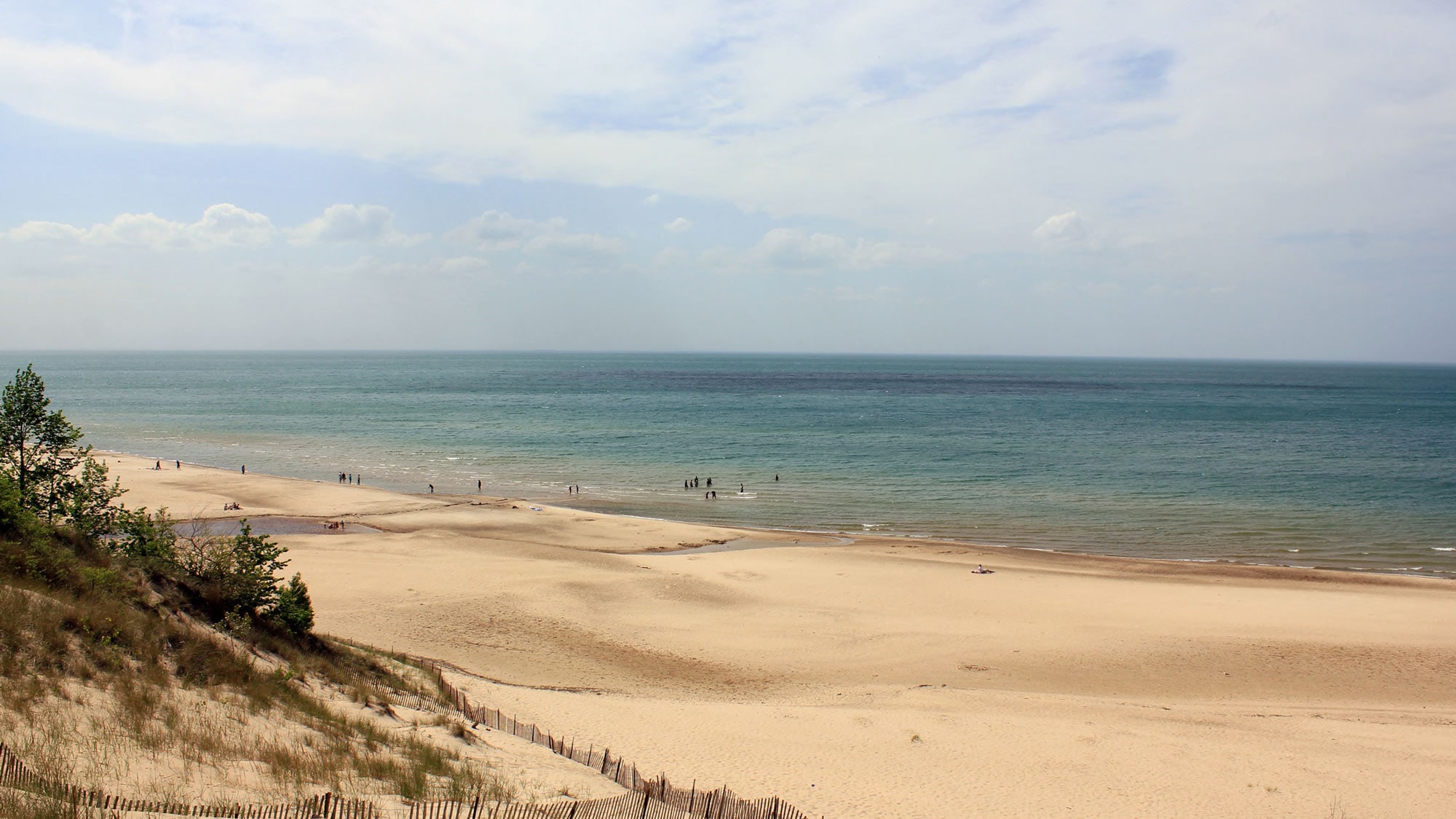The entrance to Indiana Dunes National Park isn’t a historic monument standing sentinel on a sweeping landscape, like Yellowstone’s. To reach it, one doesn’t drive winding, scenic corridors through the mountains, as with Grand Teton. The gateway to Indiana Dunes is a freeway exit just outside Chicago, off the main thoroughfare of I-90 that connects several major Midwest cities.
That’s precisely what makes it special. Despite its proximity to downtown Chicago, this national park is one of the most biodiverse protected areas in the country, encompassing beaches, wetlands, bogs, sand dunes, prairies and oak savannas inside its relatively small 15,000 acres. And its location in the backyard of dense urban hubs like Gary and South Bend, beyond Chicago, means access to wilderness for people who might not otherwise make the journey to the Grand Canyons and Yosemites of the west.
Long a national lakeshore outside the usual national park tourism circuit, Indiana Dunes is celebrating its first anniversary as one of the country’s newest national parks this February 15. The designation change means that Indiana Dunes is finally getting its due.
“The day the bill was passed last February, we started hearing people say, ‘We heard you’re a national park and we want to visit you this summer,’” said Bruce Rowe, supervisory park ranger and public information officer for Indiana Dunes. “Visitation is up 20 percent. It’s most noticeable at the visitor center, since repeat locals don’t tend to stop in there.”
That surge in enthusiasm for the Dunes has been infectious among the staff, Rowe said, reminding many of those who’ve worked here for so long of what makes this place worthy of national park status. With visitation on the rise, the park’s new status is also an excuse to pull back the curtain on the federal public lands staff who keep our protected areas wild, clean and open for the public to enjoy.
Kip Walton, Outreach Coordinator
When he was young, Kip Walton thought he’d either be a professional soccer player or a park ranger, which he assumed from movies meant that he’d ride around Yellowstone on horseback and rescue people from dire situations in the wild. He landed his first internship in college in Illinois’ Lincoln Home National Historic Site, sitting in an air-conditioned room and answering questions—not exactly his preconceived notion of rangering.
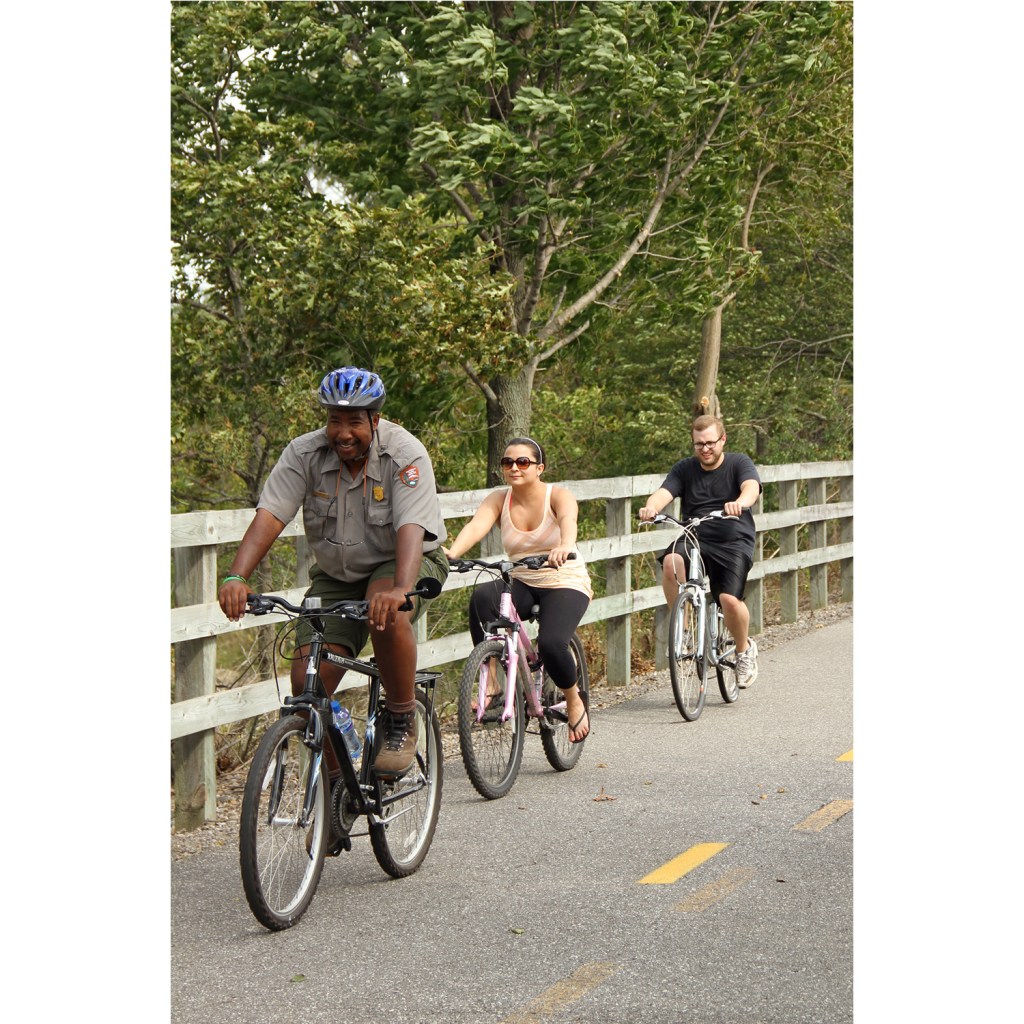
Outreach Coordinator Kip Walton leads a bike hike along a stretch of the park’s 37 miles of interconnected bike trails.
He landed his next internship in Indiana Dunes, as an interpretive ranger when he was 19, and he hasn’t left since (this might partially be due to the fact that he met his wife, also a ranger, in the park). Now 51, Walton runs Indiana Dunes’ urban outreach. He gives presentations to schools, community groups, churches and YMCAs. Clad in uniform with his park truck and attention-grabbing props like animal skins—and sometimes live animals—and artifacts, he’s a presence at community events in Chicago, Indianapolis and South Bend. He broadcasts to people that a national park lies in their backyard, and helps them understand what that means.
“National parks are considered the jewels of the United States of America, set aside for the people because they’re so special,” he said. “Then take the fact that there’s a large percentage of people in the U.S. who don’t get to see their national parks because they don’t have the means to do it or have leisure constraints.” When it comes to Indiana Dunes, he noted: “An inner-city kid here in Gary can walk through an oak savanna ecosystem, which is one of the rarest ecosystems on the planet. To me, that’s amazing. When I do outreach and bring people to the park, that’s when I feel the proudest.”
James Whitenack, Volunteer Program Manager
Indiana Dunes boasts about 80 full-time employees. “It sounds like a lot, but it’s not,” said James Whitenack, who is in charge of the Dunes’ few thousand annual volunteers. “It takes a small militia to provide the experience and educational elements, and volunteers are integral to the success and function of the park.”
Indiana Dunes’ volunteers number a few thousand on an annual basis, performing more than 50,000 hours of work, with a core group hailing from the regional communities. Many of them, like Whitenack, grew up with Indiana Dunes as their neighborhood national lakeshore, and they want to engage in its stewardship in their adulthood.
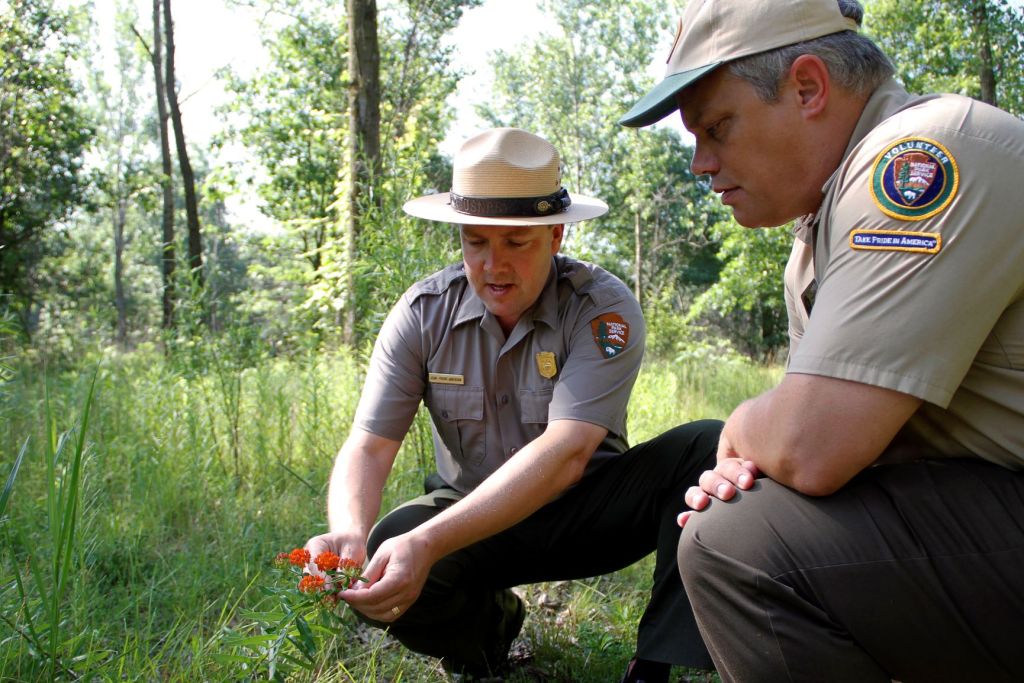
Volunteer Program Manager James Whitenack trains one of the few thousand volunteers who keep Indiana Dunes’ programs running and its trails in good condition.
The volunteer opportunities aren’t run-of-the-mill, either. On the river crew, paddlers are helping to open up the east branch of the Little Calumet River after ash-borer beetles left the waterway clogged with downed logs over the last decade and a half. The aptly named volunteer B.A.R.K. Rangers bring their dogs, who also receive official volunteer bandanas, to educate people about pets in national parks (bag waste, always leash your pet, respect wildlife, know where you can go). The farm and garden crew lends their time to help run the Chellberg Farm, a historic (and still functional) inholding inside the park. The railroad crew rides the train that runs through Indiana Dunes, giving talks to passengers as they pass through historic sites. Citizen science crews help with ongoing studies, and trail crews roam the interiors maintaining the park’s network of pathways.
“Everyone I work with loves being here. Being surrounded by that every day is what makes me enjoy my job,” says Whitenack. “I would encourage anyone who wants to volunteer with us to check out our website. There’s no formal application, just give us a call!”
Julie Waters, Park Ranger, Law Enforcement
Every summer as Julie Waters strolls the beaches on patrol in uniform, she’s asked the same question as least once: Why are you carrying a gun?
Waters works in law enforcement, an often-surprising capacity for a park ranger. She patrols the park boundaries for poachers (hunting is prohibited in national parks, but some deer hunters invariably follow trophy animals into the park every fall), checks trails and responds to search-and-rescue and medical calls. In summer, she’s mainly on the beaches, keeping peace in the crowds and encouraging people to stay off the fragile dunes. The latter is less about annoying rules and much more about conservation and education.
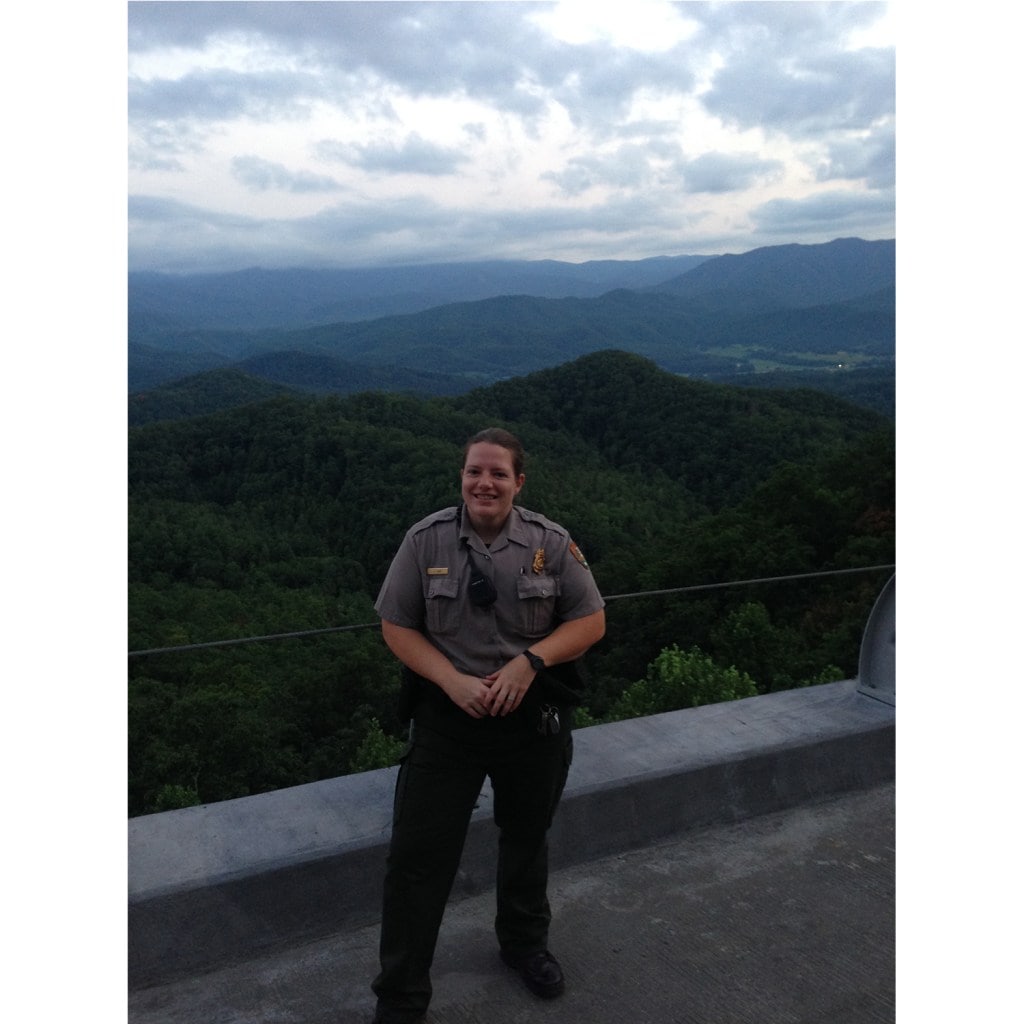
Summers find Law Enforcement Park Ranger Julie Waters keeping the peace on crowded beaches. Winter patrols tend to be a lot quieter (and colder) on the waterfront.
“Of course everyone wants to climb them, I don’t blame them,” she said. “But we’re on Lake Michigan with major erosion going on already. Then if you have two million visitors climbing the same portion of dune, the erosion is so detrimental—my grandkids won’t be able to see that because we destroyed it. This was designated a national lakeshore for a reason, to protect it from industry.”
Waters is referring to the park’s origin story, where locals banded together to save what was left of the dunes from the steel mills, harbors and breakwaters popping up all over this region in the early 1900s. In one famous example, the tallest dune in the area, the 200-foot-tall Hoosier Slide, was carted away in boxcars by the Ball Brothers to make the glass jars that still bear their name. “That’s why law enforcement plays such an important role. We need to help people understand that we’re conserving this place for future generations,” Waters said.
Kim Swift, Chief of Environmental Education
Kim Swift runs the park’s education programs, which teach students everything from Great Lakes geology to the biology of resident animals and the park’s detailed history. “We have a unique opportunity here to be able to provide a natural experience where kids—or anyone, really—can feel like they’re away from the city or the man-made world,” she said. “It’s easy and safe, and it gives that wilderness opportunity to folks who might not be able to get to it otherwise.”
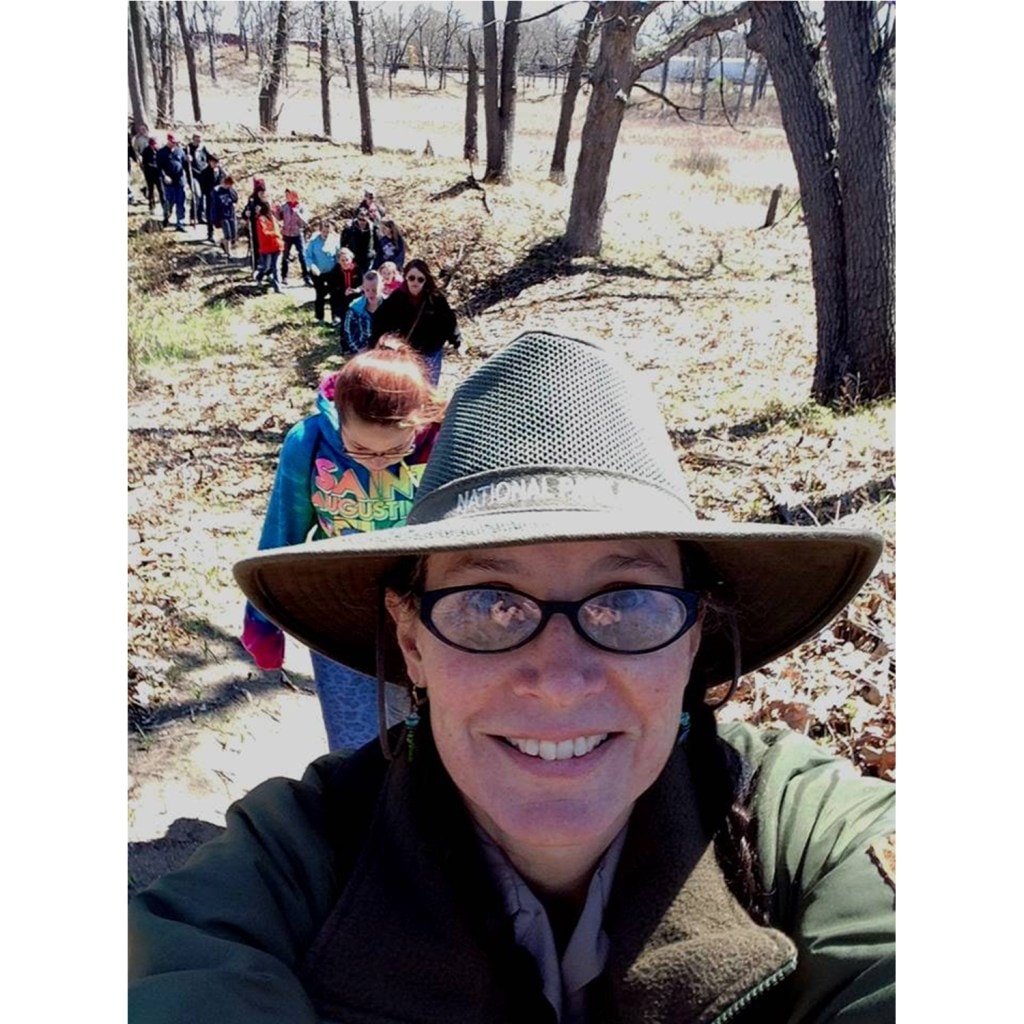
Kim Swift, chief of environmental education, leads a group of students on one of the variety of educational programs on offer (for people of all ages) at Indiana Dunes National Park.
Even for the locals, the name change to “national park” was significant, and resulted in one of the major highlights of the previous year for Swift. In honor of its new status, Chesterton High School aimed to break the record for the largest field trip in the world. Last September, the school’s 2,000 students, teachers, bus drivers and principal descended on the park for a day of programs. They were 150 kids shy of the record. “But the students loved it,” Swift said, “and now [they’re] thinking of doing it every four years so that every student that goes to the high school will get to do an all-day field trip like this.” She’s confident they’ll break the record one of these days, since Indiana Dunes has access to the population centers to make it happen.
“We need wilderness, and places like Grand Teton and the Arctic National Wildlife Refuge are critical. But places like the Dunes are just as critical, where we get to provide a wild connection to so many more people than the very few here that are going to get out to the Grand Canyon. The idea of ‘nearby nature’ is so important today.”
Lorena Nelson, Custodial Supervisor
Lorena Nelson has lived in Porter County (pop. 164,343), which borders Indiana Dunes, all her life. She used to take her children to Central Beach without realizing that it was part of the national lakeshore, always thinking it was a county park—after all, she said, everyone around here has always just called it “the Dunes,” rather than “the national lakeshore.” But now that she’s been a custodian at the Dunes for 20 years, crossing the park from edge to edge on a regular basis, she might know its landscape as a national park better than anyone.
“I have my favorite beach, my favorite trails—there are so many neat little things to come out here and experience,” she said. “And it’s all different levels of experiences from rugged to easy. I walk the trail at the Chellberg all the time with my granddaughter. Each little area has its own special uniqueness, which is one thing I’ve come to appreciate after working here for so long.”
With her surprisingly small staff of only 10 to 12 people, Nelson’s custodial work to keep Indiana Dunes clean often spans the three counties (Lake, LaPorte and Porter) of the park’s borders in a single day. The crew services showers and restrooms, collects garbage and recycling, and keeps the visitor center and other indoor areas clean as well.
“I love seeing people experience it as a national park, not just for a summer beach getaway—those are the people that get to me the most. When you see that little kid who’s never seen a body of water see Long Lake for the first time, and their eyes get really big. That’s what really makes it worth it,” she said.
Know before you go
Planning a visit? Here’s what you need to know before you go.
When to go
Summer is peak season, when locals flock to the shores of Lake Michigan inside the park to swim, sunbathe and paddle. To avoid the throngs during the warmer months, head to the park’s interior and visit the wetlands or the oak savanna forest.
Likewise, visit in April or May before things heat up, and you just might catch the spring wildflower display along the Little Calumet River. September and October are equally nice, as trails burst with color from the changing leaves. In winter, strap on a pair of cross-country skis or snowshoes and hike around Lake Michigan to glimpse the floating ice shelf that forms when conditions are frigid.
What to do
Birdwatch: The Dunes’ position along Lake Michigan plays an important role in migration routes. To learn more, check out the Indiana Dunes Birding Festival, held each May by the Indiana Audubon Society.
Bike: The park allows road, mountain and e-bikes, and pedaling is a great way to experience the park’s biodiversity. Trails are both paved and gravel, and while the 37 miles of bike trails are interconnected, it’s easy to choose routes for all ability levels.
Paddle: The Little Calumet River and the Burns Waterway are part of the Lake Michigan Water Trail, established in 2011. Both rivers prohibit motor boats, making for a peaceful way to see the park.
Indiana Dunes Outdoor Adventure Festival: Taking place October 2-4, 2020, this festival showcases hiking, paddling, geo-caching, birding and more, with opportunities for families and adventurers of all levels and abilities.
More must-see sites:
- The scaled dunes of West Beach
- Migrating birds resting in the Great Marsh
- The biodiversity of Cowles Bog
- Globally rare black oak savanna in Miller Woods
- The view from the top of Mount Baldy
All photos courtesy of Indiana Dunes National Park.
